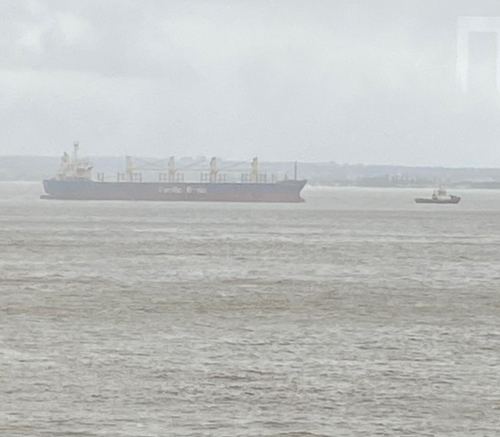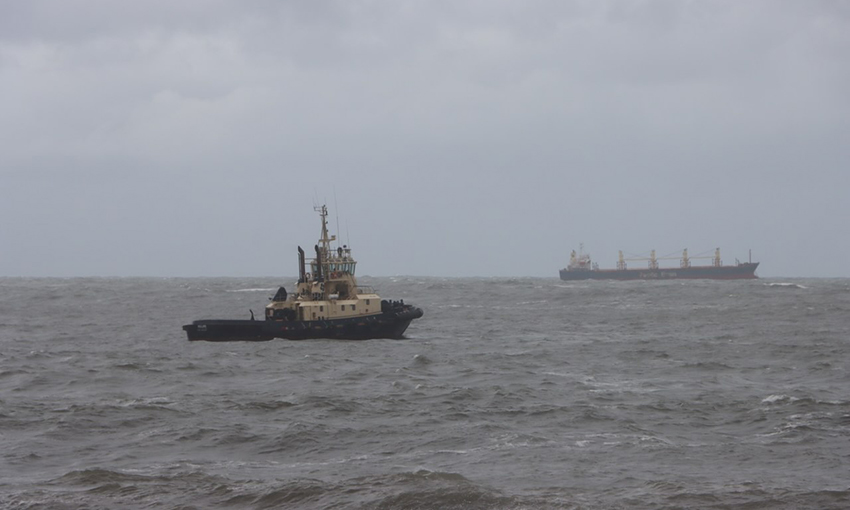THE bulk carrier Portland Bay safely berthed at Port Botany’s Hayes Dock 3 early this afternoon.
The vessel remained safe and stable overnight anchored off Cronulla.

The Australian Maritime Safety Authority, as maritime emergency response commander, today issued a legal direction to the master of the Portland Bay and salvage team that the vessel must be moved to a berth in Botany Bay today.
A statement from AMSA said bad weather preventing the movement of the vessel into harbour had subsided.
“The vessel must comply with the direction to move to harbour today as more bad weather is forecast for Thursday,” AMSA said.
“AMSA has been working closely with the appointed salvor to task emergency towing vessel Glenrock in combination with other tug assets supporting the vessel, to move the MV Portland Bay to assist with repairs to the stricken vessel.”
Glenrock arrived on the scene from Newcastle yesterday morning and has large vessel towing capability, which can safely move the stranded Portland Bay into a harbour berth.
Three additional tugs were on hand to assist the vessel into berth.
Port Authority of New South Wales CEO Philip Holliday said two marine pilots boarded the vessel earlier in the day and the operation to bring it alongside.
“The incident management team assessed conditions were right to commence the multi-stepped processes to bring this vessel safely into berth at Port Botany,” he said.
“Once berthed safely in Port Botany, the vessel will fall under the direction of AMSA.”
AMSA executive director response Mark Morrow said it was vital that the vessel be moved into safe harbour before the next front of bad weather arrives tomorrow.
“As always, we want to ensure that the crew are safe and the vessel can be made seaworthy while the next east coast low passes through the region,” Mr Morrow said.
“Those smaller tugs have done amazing work over the past 24-36 hours ensuring the stricken vessel did not drift onto some of Sydney’s most pristine coastline,” Mr Morrow said.
The bulk carrier lost power after it departed Port Kembla on 3 July and drifted towards the shore before it dropped its anchors about 1 nautical mile off the Royal National Park in the morning of Monday 4 July.
Throughout much of the day, it was perilously close to shore. The tug SL Diamantina arrived at the stricken vessel first at about 1000 AEST on 4 July.
For four hours, the tug and its crew managed to keep Portland Bay from dashing onto the rocks, potentially spilling its 1000 tonnes of fuel into the waters near Garie Beach and Wattamolla Beach.
At around 1400 AEST, the tugs SL Martinique and Bullara arrived to assist.
Yesterday Port Authority of NSW CEO Philip Holliday said: “If I was going to be critical, I would say it took a little while before the ship let us know how close to the shore they were. It’s always nice to know about these things sooner, but all’s well that ends well and they notified us in time to give assistance.”
The Australian Transport Safety Bureau on Monday said it was taking an “active interest” in the circumstances surrounding the incident and said it was gathering information to assess whether to conduct a formal investigation.
The bulk carrier was then taken to anchor off Cronulla Beach, near Botany Bay, where it remained until the move to Port Botany.
The Australian Transport Safety Bureau chief commissioner Angus Mitchell said the ATSB has commenced a transport safety investigation into Portland Bay’s loss of engine power.
“ATSB transport safety investigators will examine the circumstances leading to this serious incident, including the source of the engine power loss, the forecast weather conditions, and the initial actions taken by the ship’s crew in response to the loss of power,” he said.
“Investigators will also interview the ship’s crew and other relevant persons and download and analyse recorded data from the ship.”





